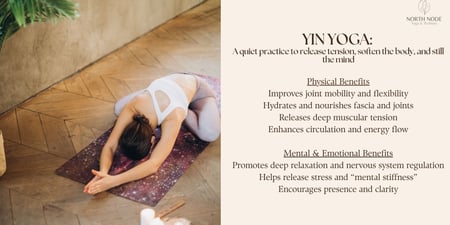Vinyasa Yoga
Vinyasa yoga teachers near you
How can Vinyasa Yoga nourish you?
With a focus on motion, variety and coordinated breathing[1], Vinyasa yoga is often regarded as a dynamic and imaginative style. The Sanskrit word ‘Vinyasa’ is usually translated ‘to place in a special way’[2], and the term is also used to define the fluid movement from one pose (asana) to the next[3]. Vinyasa yoga is known for the way your breathing is synchronised with its energetic motions, and many practitioners consider it to be a strenuous but rewarding discipline.
Today’s interpretation of Vinyasa yoga is attributed to Tirumalai Krishnamacharya[4], an Indian scholar and yoga teacher widely known as the ‘father of modern yoga’. Krishnamacharya revived Hatha and Ashtanga disciplines in India during the 1930s[5], and his students included K Pattabhi Jois and BKS Iyengar[6], who ultimately founded their own styles of yoga.
Benefits of Vinyasa Yoga
Research has shown that a fast-paced session of Vinyasa yoga can meet the criteria for “moderate-intensity physical activity”[7] on the basis of energy expenditure. There is evidence to suggest Vinyasa may beneficially increase heart rate variability[8], and even a single session of Vinyasa may offer significant improvements in measures of arterial stiffness[9].
Vinyasa yoga has been reported to potentially improve functional fitness[10], and the results of one study suggest it may offer an acute reduction in stress levels[11]. It has also been reported that just 15 minutes of Vinyasa yoga may have significant psychological benefits[12], including reduced anxiety.
What to expect from a Vinyasa Yoga session
Variety and creativity are hallmarks[13] of Vinyasa yoga exercises, and the style is often referred to as ‘flow’ yoga[14] because of the fluid movements between poses. Unlike with practices such as Bikram yoga, which follow a precise routine, Vinyasa yoga teachers are known for adapting each class, and practitioners agree that no two classes are the same[15].
That said, classes tend to follow a typical overall structure: a session of Vinyasa flow yoga for beginners will usually start with a warm-up, followed by various sequences of asanas. Although your teacher will usually choose poses that are not difficult to perform[16], the continuous movement of Vinyasa yoga can feel strenuous and athletic[17]. For this reason, it’s a good idea to wear clothing that will not make you feel weighed down or restrict your movement once you work up a sweat.
Many studios offering Vinyasa yoga use numbered levels to define the difficulty[18] of the different classes available. Once you have progressed to level 2 or beyond, you might decide to start practising Vinyasa yoga at home.
As with any exercise or wellness program, please consult your medical professional before commencing Vinyasa yoga. If you have an injury or other health issue, or any concerns at all, also speak to your teacher; the highly flexible nature of Vinyasa yoga lends itself well to optimising a session to suit your individual requirements.
References
1. What is Vinyasa Yoga? Yoga Theory Adelaide; [cited on 2024 Dec 5].
2. What is Vinyasa? Yogapedia; [cited on 2024 Dec 5].
3. Pizer A. Introduction to Vinyasa Flow Yoga. VeryWellFit; 2024.
4. Krishnamacharya. Yogapedia; 2023.
5. Krishnamacharya’s Legacy: Modern Yoga’s Inventor. Yoga Journal; 2021.
6. Interesting Facts about Tirumalai Krishnamacharya, Modern Yoga founder. Sri Krishna Wellness Yoga & Cultural Centre; [cited on 2024 Dec 5].
7. Measurement of Energy Expenditure During Fast-Paced Vinyasa Flow Yoga. Arizona State University; [cited on 2024 Dec 5].
8. Tay K, Baldwin AL. Effects of breathing practice in vinyasa yoga on heart rate variability in university students- a pilot study. Journal of Yoga & Physical Therapy; 2015.
9. The Acute Effects of Vinyasa Flow Yoga on Arterial Stiffness. International Journal of Exercise Science; [cited on 2024 Dec 5].
10. The Effect of Vinyasa Yoga on Functional Fitness. ProQuest; 2014.
11. Gaskins R, Jennings E, Thind H, Becker B, Bock B. Acute and Cumulative Effects of Vinyasa Yoga on Affect and Stress among College Students Participating in an Eight-week Yoga Program: A Pilot Study. International Journal of Yoga Therapy; 2014.
12. McGuirk MG. Mood, Anxiety, Rpe, and %Mhr after a Single 15, 30 and 60 Minute Session of Vinyasa Yoga. Georgia Southern University; 2012.
13. Allen S. 7 Reasons to Practice Vinyasa Yoga. DOYOU; 2021.
14. Introduction to Vinyasa Flow Yoga. VeryWellFit; 2024.
15. A Beginner's Guide to 8 Major Styles of Yoga. Gaiam; [cited on 2024 Dec 5].
16. Roland J. Hatha vs. Vinyasa Yoga: Benefits and How They Differ. Healthline; 2024.
17. What is Vinyasa Yoga? One Flow Yoga; 2019.
18. Vinyasa Yoga. YogaWorks; 2024.
Frequently asked questions
Vinyasa yoga teachers near you
Related articles
Categories
Browse Vinyasa yoga teachers by locations
Explore Vinyasa yoga teachers within Australia
Explore Vinyasa yoga teachers within South Africa
Browse Vinyasa Yoga services by locations
Explore Vinyasa yoga teachers within Australia
Explore Vinyasa yoga teachers within South Africa







